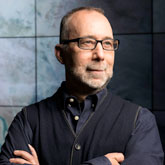NASA brings standards of evidence to the search for UFOs
 The Very Large Array radio telescope system in New Mexico (Donald Giannatti / Unsplash)
The Very Large Array radio telescope system in New Mexico (Donald Giannatti / Unsplash)
Unidentified flying objects (UFOs) and unidentified aerial phenomena (UAPs) have long interested science fiction fans, screen writers, conspiracy theorists, and, yes, scientists. But now there’s a new player in town, and it’s a gamechanger—NASA.
America’s space agency recently announced it was convening a commission to investigate UAPs. “If it’s handled well, the commission could do more than shed much-needed light on UAPs,” writes Adam Frank, the Helen F. and Fred H. Gowen Professor of Physics and Astronomy at the University of Rochester, in a Newsweek op-ed. “It could also give Americans a masterclass in the most basic, most important, and unfortunately, most boring topic in science: standards of evidence.”
As Frank explains, scientists now have the technology to detect biosignatures, which occur when a distant planet is clothed in a biosphere whose life alters the host world’s atmosphere biosignatures—in other words, signs of life. If NASA detects life elsewhere in the universe, the finding will come with the weight of the standards of evidence embodied by the agency. According to Frank:
The real opportunity lying in the proposed NASA study is not just about what it finds. Instead, it’s about showing the American people how NASA, and science in general, goes about the business of finding. Showing people how science and those standards of evidence work in a transparent way, and on a subject everyone is interested in, could be a powerful moment.

Astrophysicist Adam Frank
A self-described “evangelist of science,” Frank regularly writes and speaks about subjects like intelligent life forms in the universe, high-energy-density physics, space exploration and missions, climate change, and more.
Category: Voices & Opinion


